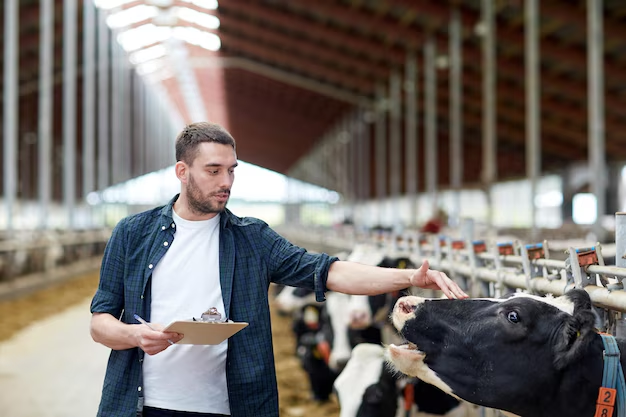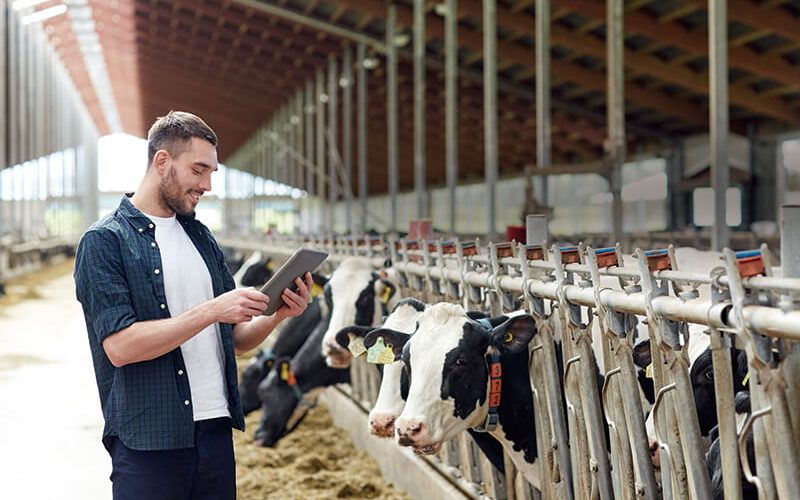Introduction
Agriculture is the foundation of global food security, but it is also one of the most complex industries to manage. From unpredictable weather patterns to soil degradation, pest infestations, and fluctuating market demands, farmers face multiple challenges on a daily basis. To remain competitive and sustainable, modern farms require more than just manual labor and traditional methods. This is where Crop Farming Software and Crop Management Software are making a significant impact.
Technology has entered every aspect of farming, providing farmers with the tools to monitor, analyze, and optimize their operations. These software solutions not only simplify agricultural processes but also empower farmers with real-time insights and data-driven decision-making.
What Is Crop Farming Software?
Crop Farming Software refers to digital tools designed to support farmers in managing various aspects of crop production. Whether it’s planning crop cycles, tracking soil health, or monitoring irrigation schedules, these tools centralize data into a single platform.
Crop farming software is a digital tool that helps farmers manage their crop production. It can do many things, like tracking planting schedules, monitoring weather, managing resources, and recording harvest data. This software is designed to make farm work more organized and efficient. Instead of guessing when to plant or how much water to use, farmers get precise data and recommendations from the software.
Key features often include:
- Field Mapping: Visual representation of different fields, crops, and soil conditions.
- Irrigation Scheduling: Tracking water usage and ensuring crops receive adequate hydration.
- Yield Forecasting: Using historical and real-time data to predict harvest outcomes.
- Weather Monitoring: Providing farmers with reliable weather forecasts to minimize risks.
- Pest and Disease Tracking: Identifying potential threats early to protect crops.
By adopting Crop Farming Software, farmers gain better control over production cycles, reduce waste, and improve yields.
What Is Crop Management Software?
Crop management software is similar but focuses more on managing the entire crop life cycle. It helps farmers keep track of everything from soil health to pest control, irrigation, and fertilizer use. This software often includes tools for record-keeping, financial management, and reporting. It helps farmers make better decisions to improve crop health and yields while reducing costs and environmental impact.
How These Software Tools Work Together
Crop farming software and crop management software often overlap. Together, they give farmers a full view of their farm operations. They collect data from sensors, weather stations, and drones to provide real-time updates. This information helps farmers understand what is happening on their land and how to react quickly to problems like pests or bad weather.
The Role of Crop Management Software
While crop farming software is focused on production, Crop Management Software offers a broader and more integrated approach. It functions as an end-to-end system that allows farmers to oversee not just planting and harvesting but also inventory, labor, and financial management.
Some of the advanced functions of crop management platforms include:
- Inventory Management: Tracking seeds, fertilizers, pesticides, and equipment.
- Financial Analysis: Monitoring costs, profits, and return on investment.
- Labor Tracking: Assigning tasks, monitoring productivity, and ensuring compliance with safety standards.
- Compliance Reporting: Ensuring farms meet legal and environmental regulations.
- Supply Chain Integration: Helping farmers connect with distributors and retailers directly.
In short, while Crop Farming Software is focused on field-level insights, Crop Management Software brings together all aspects of farming into a unified system.
Why Farmers Need Digital Tools

The global population is expected to reach 10 billion by 2050. To meet the food demands of such growth, farmers must increase productivity without harming the environment. Digital tools are no longer optional—they are a necessity.
Here’s why adopting crop software makes sense:
- Efficiency: Automating routine tasks saves time and labor.
- Precision: Data-driven farming ensures resources like water, fertilizers, and pesticides are used optimally.
- Profitability: Farmers can forecast yields, track expenses, and maximize returns.
- Sustainability: Smart software reduces environmental impact by minimizing waste.
- Risk Reduction: Real-time alerts on weather or pest risks help farmers act before problems escalate.
Real-World Applications of Crop Farming Software
Imagine a farmer managing 500 acres of wheat. Without digital tools, keeping track of irrigation schedules, fertilizer applications, and pest control measures would be overwhelming. With Crop Farming Software, the farmer can:
- Monitor soil moisture levels remotely.
- Receive automated alerts when fields require watering.
- Record pesticide application to ensure food safety compliance.
- Access historical data to decide which wheat variety performs best in certain conditions.
These insights allow the farmer to make quick, informed decisions that directly boost productivity.
How Crop Management Software Enhances Agribusiness
Large-scale agribusinesses require not just crop monitoring but also workforce management, cost optimization, and compliance with international standards. Crop Management Software simplifies these complex tasks by:
- Centralizing all farm data into one dashboard.
- Providing performance analytics across multiple farms or regions.
- Offering mobile accessibility so managers can track progress on the go.
- Enabling farmers to connect with buyers, improving supply chain efficiency.
For example, a fruit orchard using crop management tools can track harvest schedules, labor productivity, cold storage capacity, and even transportation logistics ensuring minimal wastage and maximum profitability.
Integration With Other Technologies
The future of farming lies in the integration of software with modern hardware and AI-based systems. Both Crop Farming Software and Crop Management Software are now being combined with:
- IoT Sensors: Placed in fields to measure soil quality, moisture, and nutrient levels.
- Drones: Used for aerial mapping, crop spraying, and pest monitoring.
- AI & Machine Learning: Predicting yield outcomes and identifying patterns in crop diseases.
- Blockchain: Ensuring food traceability and building consumer trust.
This integration allows for a holistic approach to smart farming, ensuring every resource is used wisely.
Challenges in Adoption
Despite the benefits, not all farmers have embraced these solutions. Challenges include:
- High Initial Costs: Many small-scale farmers find software solutions expensive.
- Digital Literacy: Some lack the technical knowledge to use advanced tools.
- Connectivity Issues: Rural areas often struggle with internet access.
However, as software becomes more affordable and user-friendly, adoption is expected to rise significantly. Governments and agricultural organizations are also supporting digitization to promote sustainable farming practices.
The Future of Farming With Digital Tools
In the coming years, farming will increasingly rely on smart technologies. Farmers will be able to track every detail of their operations from a mobile app, from soil nutrition levels to financial forecasts. With Crop Farming Software handling field-level activities and Crop Management Software integrating business processes, the agriculture industry is poised for a digital revolution.
This transformation will not only improve productivity but also ensure that farming remains sustainable and profitable in the face of global challenges.
Conclusion
The shift from traditional farming methods to digital tools marks a turning point in agriculture. By adopting Crop Farming Software and Crop Management Software, farmers gain the ability to optimize operations, improve yields, and secure their future in a highly competitive market.
As technology continues to evolve, these tools will become indispensable, helping farmers feed the world more efficiently and sustainably. The farms of tomorrow will be smart, connected, and data-driven—and the foundation of that transformation begins with the adoption of advanced crop software solutions today.










